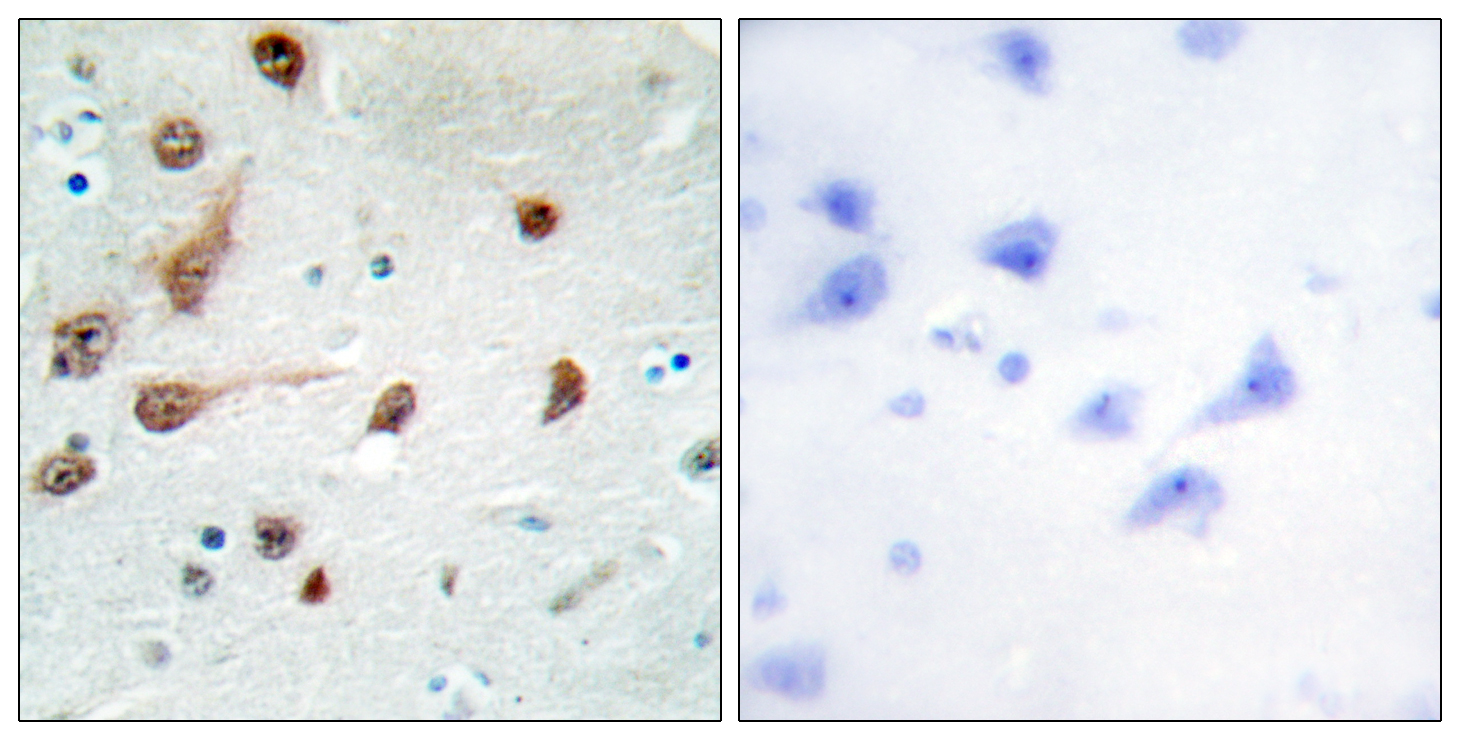ADAR1 Polyclonal Antibody
- Catalog No.:YT0118
- Applications:IHC;IF;WB;ELISA
- Reactivity:Human;Mouse;Rat
- Target:
- ADAR1
- Fields:
- >>Cytosolic DNA-sensing pathway;>>Measles;>>Influenza A;>>Coronavirus disease - COVID-19
- Gene Name:
- ADAR
- Protein Name:
- Double-stranded RNA-specific adenosine deaminase
- Human Gene Id:
- 103
- Human Swiss Prot No:
- P55265
- Mouse Gene Id:
- 56417
- Mouse Swiss Prot No:
- Q99MU3
- Rat Gene Id:
- 81635
- Rat Swiss Prot No:
- P55266
- Immunogen:
- The antiserum was produced against synthesized peptide derived from human ADAR1. AA range:1172-1221
- Specificity:
- ADAR1 Polyclonal Antibody detects endogenous levels of ADAR1 protein.
- Formulation:
- Liquid in PBS containing 50% glycerol, 0.5% BSA and 0.02% sodium azide.
- Source:
- Polyclonal, Rabbit,IgG
- Dilution:
- WB 1:500-2000 IHC 1:100 - 1:300. ELISA: 1:20000.. IF 1:50-200
- Purification:
- The antibody was affinity-purified from rabbit antiserum by affinity-chromatography using epitope-specific immunogen.
- Concentration:
- 1 mg/ml
- Storage Stability:
- -15°C to -25°C/1 year(Do not lower than -25°C)
- Other Name:
- ADAR;ADAR1;DSRAD;G1P1;IFI4;Double-stranded RNA-specific adenosine deaminase;DRADA;136 kDa double-stranded RNA-binding protein;p136;Interferon-inducible protein 4;IFI-4;K88DSRBP
- Observed Band(KD):
- 135kD
- Background:
- adenosine deaminase, RNA specific(ADAR) Homo sapiens This gene encodes the enzyme responsible for RNA editing by site-specific deamination of adenosines. This enzyme destabilizes double-stranded RNA through conversion of adenosine to inosine. Mutations in this gene have been associated with dyschromatosis symmetrica hereditaria. Alternative splicing results in multiple transcript variants. [provided by RefSeq, Jul 2010],
- Function:
- caution:The N-terminus of isoform 4 has been derived from EST and genomic sequences.,disease:Defects in ADAR are a cause of dyschromatosis symmetrical hereditaria (DSH) [MIM:127400]; also known as reticulate acropigmentation of Dohi. DSH is a pigmentary genodermatosis of autosomal dominant inheritance characterized by a mixture of hyperpigmented and hypopigmented macules distributed on the dorsal parts of the hands and feet.,function:Converts multiple adenosines to inosines and creates I/U mismatched base pairs in double-helical RNA substrates without apparent sequence specificity. Has been found to modify more frequently adenosines in AU-rich regions, probably due to the relative ease of melting A/U base pairs as compared to G/C pairs. Functions to modify viral RNA genomes and may be responsible for hypermutation of certain negative-stranded viruses. Edits the messenger RNAs for glutama
- Subcellular Location:
- [Isoform 1]: Cytoplasm . Nucleus . Shuttles between the cytoplasm and nucleus (PubMed:7565688, PubMed:24753571). Nuclear import is mediated by TNPO1 (PubMed:24753571). .; [Isoform 5]: Cytoplasm . Nucleus . Nucleus, nucleolus . Predominantly nuclear but can shuttle between nucleus and cytoplasm. TNPO1 can mediate its nuclear import whereas XPO5 can mediate its nuclear export. .
- Expression:
- Ubiquitously expressed, highest levels were found in brain and lung (PubMed:7972084). Isoform 5 is expressed at higher levels in astrocytomas as compared to normal brain tissue and expression increases strikingly with the severity of the tumor, being higher in the most aggressive tumors.
- June 19-2018
- WESTERN IMMUNOBLOTTING PROTOCOL
- June 19-2018
- IMMUNOHISTOCHEMISTRY-PARAFFIN PROTOCOL
- June 19-2018
- IMMUNOFLUORESCENCE PROTOCOL
- September 08-2020
- FLOW-CYTOMEYRT-PROTOCOL
- May 20-2022
- Cell-Based ELISA│解您多样本WB检测之困扰
- July 13-2018
- CELL-BASED-ELISA-PROTOCOL-FOR-ACETYL-PROTEIN
- July 13-2018
- CELL-BASED-ELISA-PROTOCOL-FOR-PHOSPHO-PROTEIN
- July 13-2018
- Antibody-FAQs
- Products Images

- Immunohistochemistry analysis of paraffin-embedded human brain tissue, using ADAR1 Antibody. The picture on the right is blocked with the synthesized peptide.



